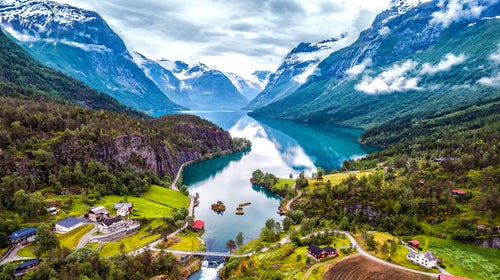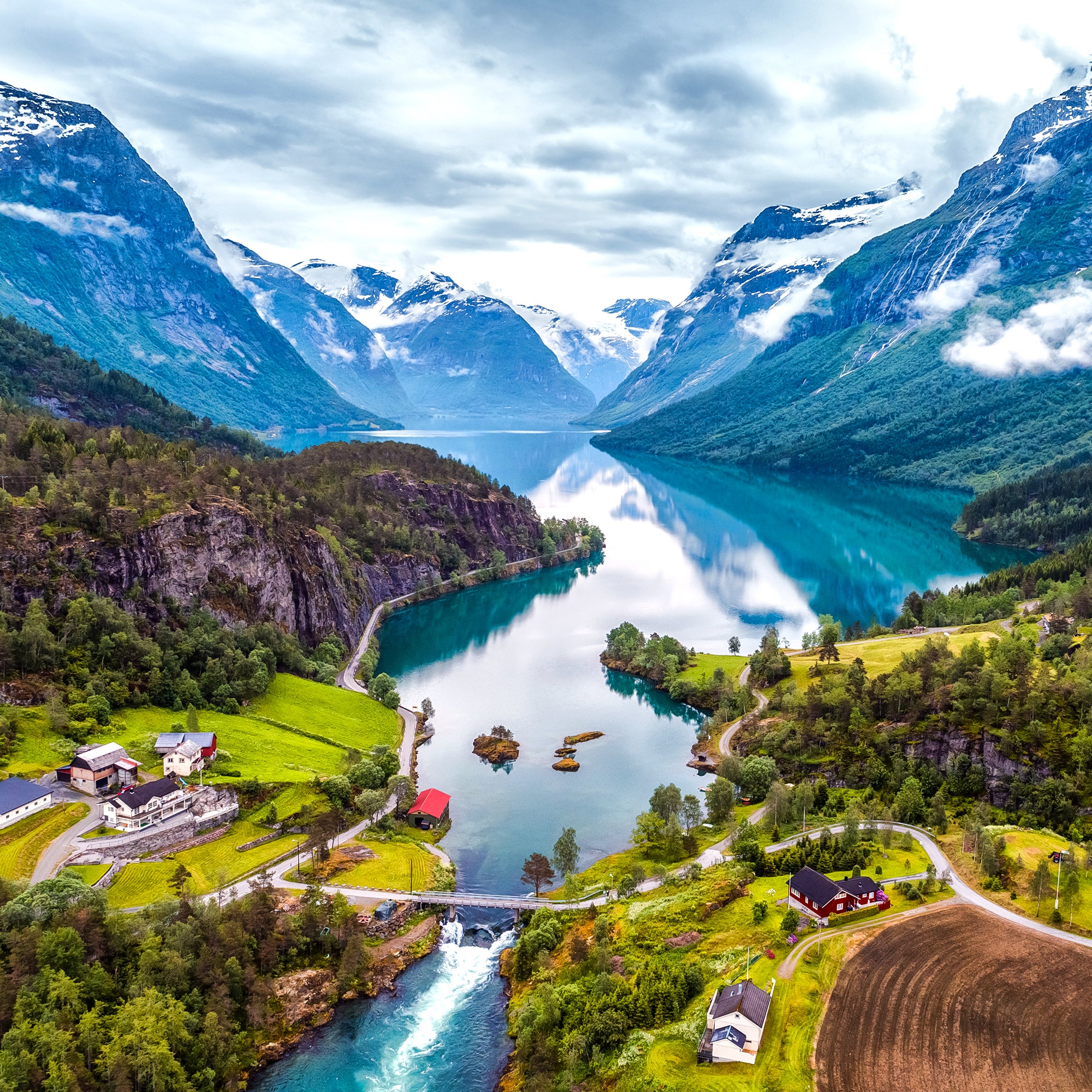In late March, the United Nations published the , a comprehensive look at what makes the most contented countries work so well. For the seventh year in a row, the Nordic nations of Finland, Denmark, Iceland, Norway, and Sweden dominated the top ten. While rankings are based on several factors, including political rights and economic equality, these countries have a few key metrics in common: low corruption rates, universal public services, and great access to the outdoors.��
For many of these countries, not only is nature within easy reach, but it’s an important part of their cultures. For the Scandinavian nations that take up six of the top-ten spots, the term friluftsliv, which literally translates to “open-air living,” denotes “a philosophical lifestyle based on experiences of the freedom in nature and the spiritual connectedness with the landscape,” according to “,” an article in The Canadian Journal of Environmental Education.��
Sweden, which ranked seventh on the list, that nearly one-third of all residents participate in outdoor recreation at least once a week and, in a country that strives for economic equality, nearly 50 percent of the population has . Denmark, ranked second, has for children to encourage learning in the outdoors at a young age, and one found that children from greener neighborhoods were less likely to develop mental illness. The country is also home to the world’s most bike-friendly city, Copenhagen (though it’s not alone: many of the happiest countries have ). And Finland, which topped the list, boasts 188,000 inland lakes and forests that cover 75 percent of the country.
Finland, Norway, and Sweden also have “freedom to roam” policies, or which allow residents and visitors alike to hike or camp nearly anywhere, including on private land. It’s also part of the region’s approach to work-life balance: many businesses in Scandinavian countries encourage employees to go outside each day, even that set aside time in the workday for fresh air. The most important part of their outdoor philosophy, though, is how they embrace the cold, dark winter months, as is expressed in the popular saying of Norwegian origin that’s now used throughout the region: “There’s no such thing as bad weather, only bad clothes.” Parents in Scandinavia are known to let their in freezing temperatures to help them sleep better and longer, Finns embrace harsh conditions with their sauna culture, and when the Danes and Swedes aren’t skiing, sledding, or to tobogganing, they’re practicing hygge, which loosely translates to being cozy.
For many of these countries, not only is nature within easy reach, but it’s an important part of their cultures.
The other countries that rounded out the top ten—Switzerland, the Netherlands, New Zealand, Austria, and Luxembourg—are also well-known adventure hubs. With its iconic snowcapped peaks, Switzerland is one of Europe’s most popular ski and hiking destinations. New Zealand has a system of ten Great Walks that allow even relatively inexperienced backcountry hikers to experience some of the country’s most beautiful landscapes for days and weeks at a time. The Netherlands is an established haven for cyclists, with residents making of their daily trips via bike.��
The UN’s Sustainable Development Solutions Network bases its annual report on six categories: GDP per capita, life expectancy, social support, trust and corruption, perceived freedom to make life decisions, and generosity. The rankings are largely based on findings from the , a yearly survey conducted in more than 160 nations that evaluates respondents’ perceived quality of life .��
By comparison, the U.S ranks 18th in terms of overall happiness, a move up from 19th in 2019. While this can be seen as a good sign, the fluctuation among the top 20 happiest countries is marginal. The U.S. has never cracked the top ten, perhaps in part because Americans are spending less time outdoors. According to an Outdoor Foundation study released in January, nearly half the U.S. population doesn’t participate in outdoor recreation, with only 18 percent of people getting out for physical activity at least once a week. In addition, Americans took one billion fewer trips outside in 2018 than they did in 2008.��
Beyond their appreciation for the outdoors, additional aspects of the top-ten societies likely contributed to their residents’ well-being. Most have universal health care systems, offer free college education, have substantial , and are among some of the wealthiest countries in the world. By comparison, the unhappiest countries include Afghanistan, Yemen, and Palestine, which have continuously been racked with wars and conflict in recent history.��
It to think about what the future will look like, as social-distancing guidelines cause feelings of isolation and cabin fever,�����Ի� . But if you’re looking for ways to increase your own well-being and set in motion a more outdoors-based lifestyle once this is all over, start now by following these rules for getting outside safely.


